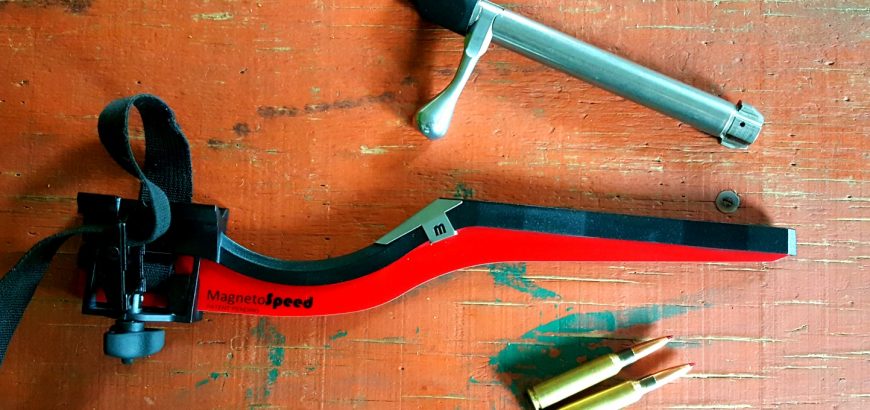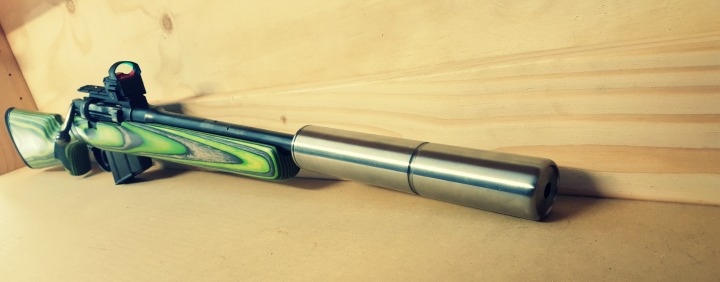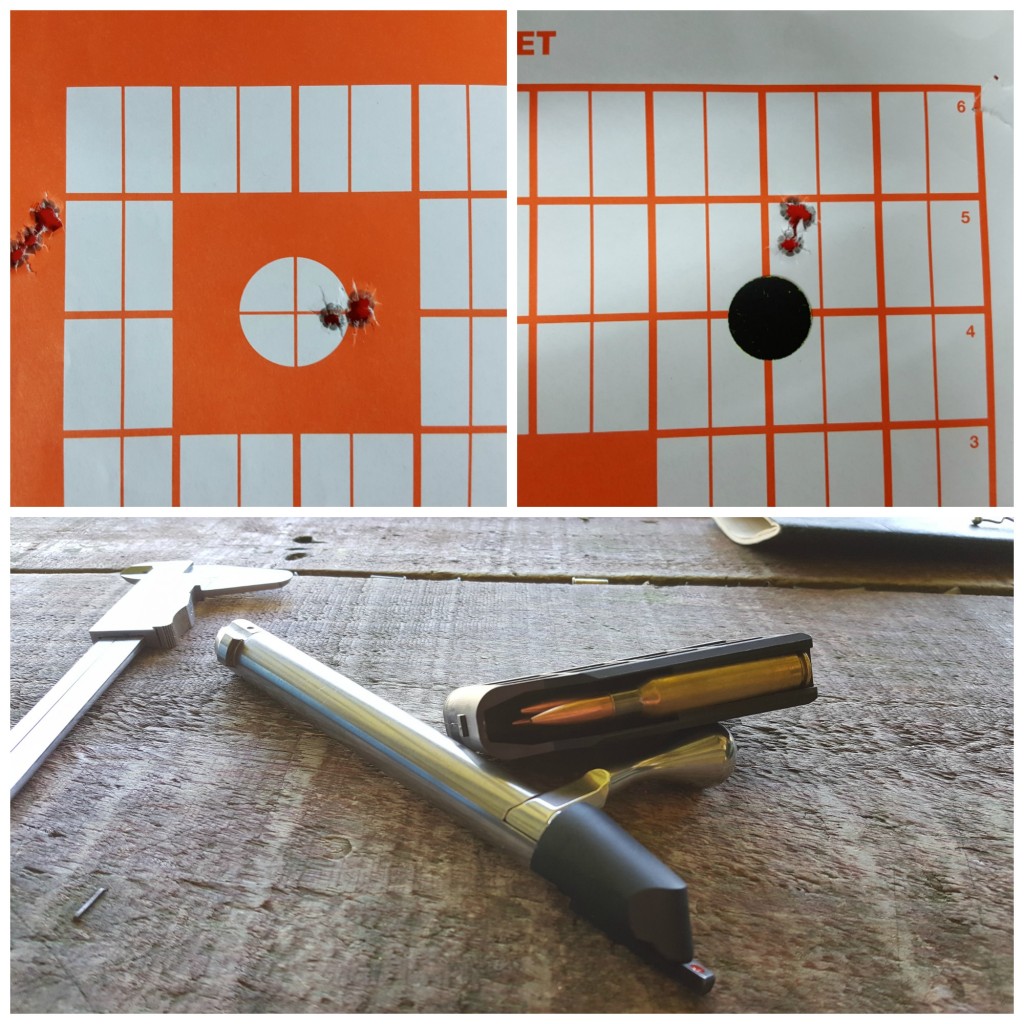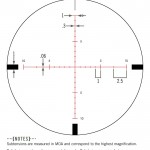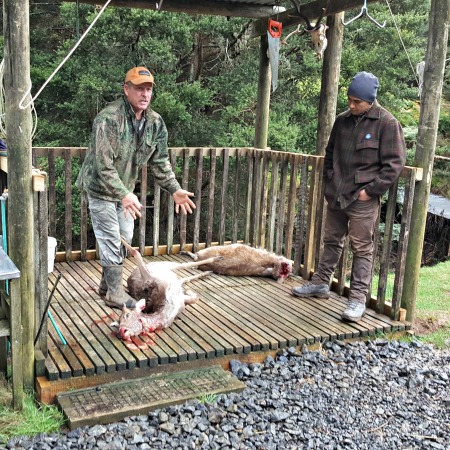Chronographs are getting more and more common in shooting circles these days, and you will likely see at least one on your next visit to the range. So what exactly do they do? Well, on a basic level, they tell you how fast the projectile you are firing is traveling once it leaves the rifle.
Why is this important to know? Well, a couple of reasons. Firstly, all things being equal, the more consistent speeds your projectiles travel at, the more consistent you groups should be (ignoring all other factors which contribute to overall accuracy). Secondly, and perhaps most importantly, by knowing how heavy our projectile is, how aerodynamic it is, and how fast it is travelling when it leaves the barrel we can accurately calculate the bullet’s trajectory over any given distance.
![Ballistic Precision Chronograph G2 - A light operated chrony by Caldwell Shooting Supplies [image credit: BTI Brands]](http://www.gunrack.co.nz/wp-content/uploads/2017/02/caldwell.jpg)
What types of chronographs are there?
The first thing you need to know is that there are three main types of chronograph available to us as shooters; Light Chronographs, Magnetic Chronographs and Radar Chronographs.
I’ll try and explain a little about each below:
Light Chronographs
Light chronographs use a series of light sensors (usually two, but sometimes more) placed at a controlled distance apart in order to measure how long it takes for a projectile to break each of the light beams and calculate speed based on this. These chronographs are set up at a specific distance in front of the rifle or pistol on a tripod or bench (i.e. in front of the firing line, for those shooting on a range this may be a problem) and shots must be made in a way that breaks both beams.
Light chronographs are considerably cheaper to manufacture than the other types, and so can often be purchased for a reasonable amount. This type of chronograph is however affected by ambient light, so much so that even clouds passing in the sky may have an impact on speed readings. To get around this many manufactures create plastic hoods to help control the light above the sensor with varying degrees of success, but the same round is likely to show a slight variation day to day depending on conditions.
For this reason, light Chronographs are generally considered less accurate by nature than the other types available. This may not be an issue in reality however, as 10 or so feet per second variation between shots when you’re talking about 2800 fps is really quite minimal so may be fine for what many shooters require.
One thing I personally don’t like about light chronographs however is I find them hard to read. This is very much a personal thing and I’m sure 95% of people won’t have this issue, but I find trying to read a small LED screen that is 2-3 m in front of me, with a sun reflection, quite difficult. And because it’s in front of the shooting line I can’t just go up for a closer look. Some units do allow aftermarket screens to be connected which are either larger or sit closer to the shooter to get around this (just something to consider).

Magnetic Chronographs
The second type of chronograph is a magnetic chronograph. These types of chronographs use sensors which produce magnetic fields and then measure metal projectiles as they pass through this field. These types of chronographs often mount to the rifle, or have a platform the rifle sits on when firing in order to keep a constant distance from the projectile as it passes.
The types that mount onto the rifle have positives and negatives, the positives are that the measurements are consistent and accurate as the chronograph and rifle move together it eliminates any error created by the shooter’s/rifle’s position repeatability, it also means that a shooter doesn’t have to go in front of the firing line in order to set it up, and this type of chronograph has the ability to register very fast strings of fire (i.e the ability to register and measure every shot on a full-auto AR-15 without skipping a beat).

The negative is that you are strapping something to your rifle which has the potential to affect harmonics and adjust your point of impact. I will say I own a barrel mounted magnetic chronograph and have not had any change in point of impact as a result of using it and neither have many shooters I have spoken to. However, I have heard from some shooters who have had very slight point of impact shifts. This may or may not be a problem for you depending on your setup and requirements.
This type of unit may also be difficult to use on certain pistols, particularly those without rail mounts on their frames. One other negative is that solid lead rounds may be difficult to detect without sensitivity adjustment (jacketed bullets are fine), as lead has a very low magnetic field.
[Editor’s note: As long as you remember to adjust your sensitivity settings, you should be fine. I’ve used this type of chrono on subsonic (~950 fps) cast lead bullets with good success.]
Radar Chronograph
The third type of chronograph is a radar chronograph, and you guessed it – this type uses a radar (Continuous Wave Doppler) signal to project downrange and calculate the speed of the projectile as it travels through the radar wave zone.
The benefits of this type of system are that you set it up parallel to your shooting position, so there is no need to go forward of the shooting line. They also don’t touch your rifle, so have no possibility of impacting harmonics, and unlike an on-barrel magnetic chronograph, you set it up once per session and you don’t need to move it in order to test different rifles.
Some radar chronographs also give you the ability to set a tolerance range and any shots outside that range will be indicated by an audible ‘beep’ so you are getting instant feedback without having to monitor the output screen. The downside to this type is that they often struggle to distinguish between different shooters / projectiles as they pass through the radar waves. If you are at a range with people shooting next to you, it’s potentially not going to know whose shot is whose and may give you readings for the guys next to you, also. Some units have different methods of trying to prevent this, such as microphone triggers / built in software etc.
These units may also struggle to work in some shooting tunnels both due the their need to be set up near the shooter and project forward and also the radar wave “bouncing” off the tunnel walls giving false signals.
Test fire and choosing a chrono
Some recent basic testing we did using a magnetic chronograph and a light chronograph showed 6-7 FPS variation between the two respective readings for the same round, with the light chrono reading faster than the magnetic. With the speeds we were shooting this equates to around a 0.2% variation between the two units which I would suggest is more than accurate enough for most recreational shooters to know what they want to know.
How much you want to spend on a chronograph is up to you, as always there are cheaper and more expensive units out there, and what features you want will also impact price. In general, light chronographs start around $200 NZD for basic models and go to about $500. Magnetic and Radar chronographs start about $400 and go up to about $1000 depending on what functionality you want.
Some of the positives and negatives discussed above may or may not be applicable to you and how you intend to use it. Hence the cheapest light chrono may be fine for your purpose, or you may feel you need to spend $1000 + on a radar unit with all the bells and whistles. I would suggest if you’re looking for your first chronograph that you will probably use a few times a year to develop loads for hunting, then the cheapest light chronograph will likely tell you everything you need to know.
